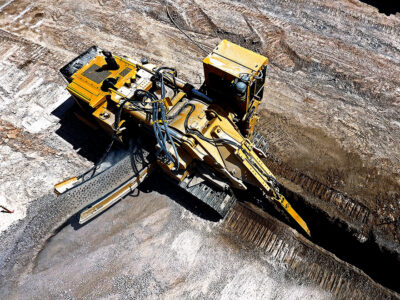Understanding the project requirements
According to Barry Scieszinski, Vermeer application specialist, contractors need to consider soil conditions, installation depth and width and what product is going in the ground when making the decision about what trencher model is right for a project.
- Soil conditions
Soil conditions play a crucial role in determining the appropriate trencher size. Different regions may have varying soil characteristics, such as hardness and composition. Scieszinski noted that the weight of the machine is a critical factor to consider.
“In the Midwest, for example, larger machines like the Vermeer T955 or T1055 Commander® 3 trencher may not be suitable due to soil conditions that cannot support their weight. Understanding the soil conditions in your region will help determine the appropriate trencher size for optimal performance,” explained Scieszinski. - Digging depth and width
Trench width and depth also influence the choice of trencher size. It is essential to strike a balance between the desired depth and the appropriate machine size. Going too deep without the right equipment can lead to inefficiency. - Rock hardness
When dealing with rock formations, it is crucial to consider the hardness and PSI (pounds per square inch) rating of the rock. Scieszinskistresses that contractors need to understand the type of rock and its characteristics.
“Different rock formations require specific trencher sizes and trencher types,” he said. “For example, a Vermeer T755 Commander® 3 trencher with a wider shoe on the track and less ground pressure is suitable for handling cobble or bowling ball-size stones underground but will not be the most efficient machine in harder rock variations. When a contractor isn’t sure about the rock’s characteristics, taking core samples and conducting a rock lab analysis should be done.” - Location of the rock and ground conditions
The location of the rock within the excavation site is another important consideration. Scieszinski explained that the first 10 ft (3 m) of material may consist of black dirt and clay, with the rock lying deeper and fluctuating in depth.
“Contractors and project owners need to take the time to understand what the conditions are at the depth they intend to trench,” Scieszinski added. - Fuel consumption and productivity
When deciding between trencher sizes, it is essential to consider fuel consumption and productivity. While larger machines may offer more power, they also consume more fuel. Scieszinski advises contractors to weigh the cost of ownership and production when choosing between different trencher sizes. Stepping up to a larger machine may require a significant investment. Contractors should evaluate if the increased productivity justifies the additional fuel consumption.
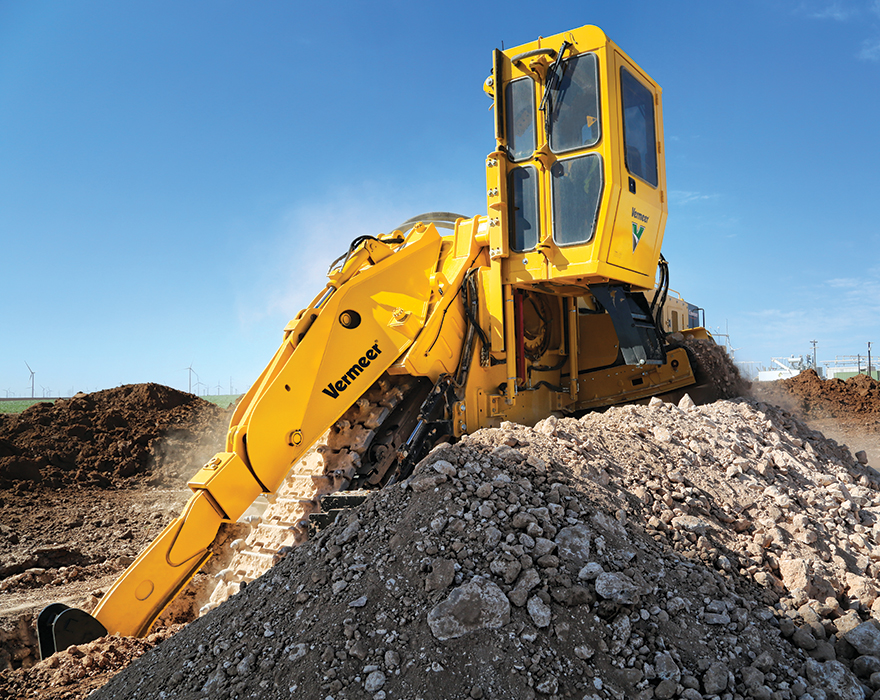
Available Vermeer trencher models
Vermeer offers a variety of trenching solutions for cutting through hard rock or installing utilities. These trenchers feature low-speed, high-torque motors, self-leveling tracks and oscillating track frames. Additionally, Vermeer trenchers come with the TEC® Plus electronic control system for real-time performance data and advanced troubleshooting capabilities. Optional features include a wireless remote control, optional drags, a split cab design and an extended care service program.
Vermeer trencher models include:
T1255 Commander 3 trencher: Heavy-duty trencher for large-diameter applications and high-volume spoil removal.
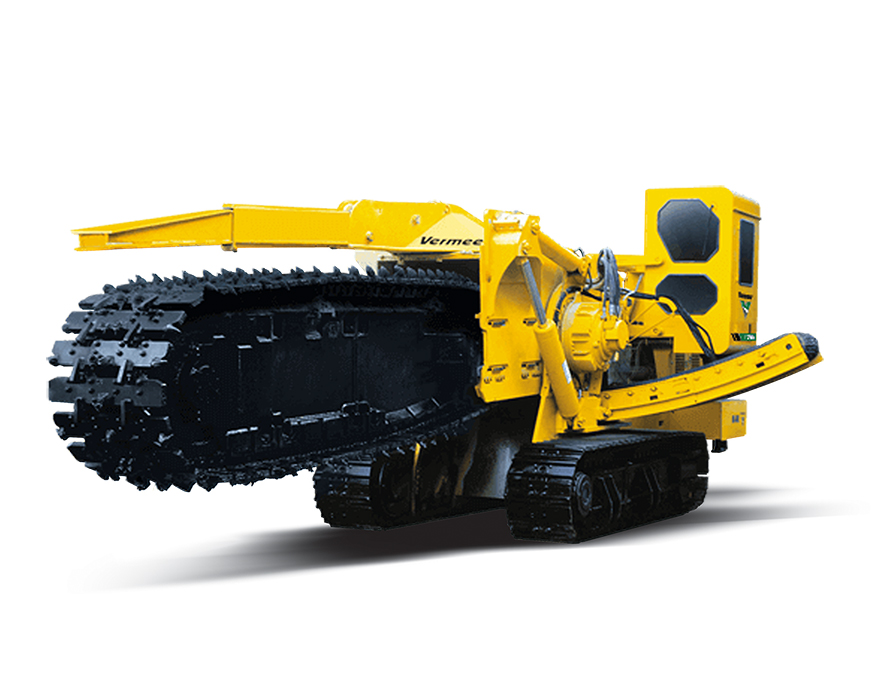
T1155 Commander 3 trencher: Ideal trenching machine for penetrating rock with a versatile boom and high horsepower.
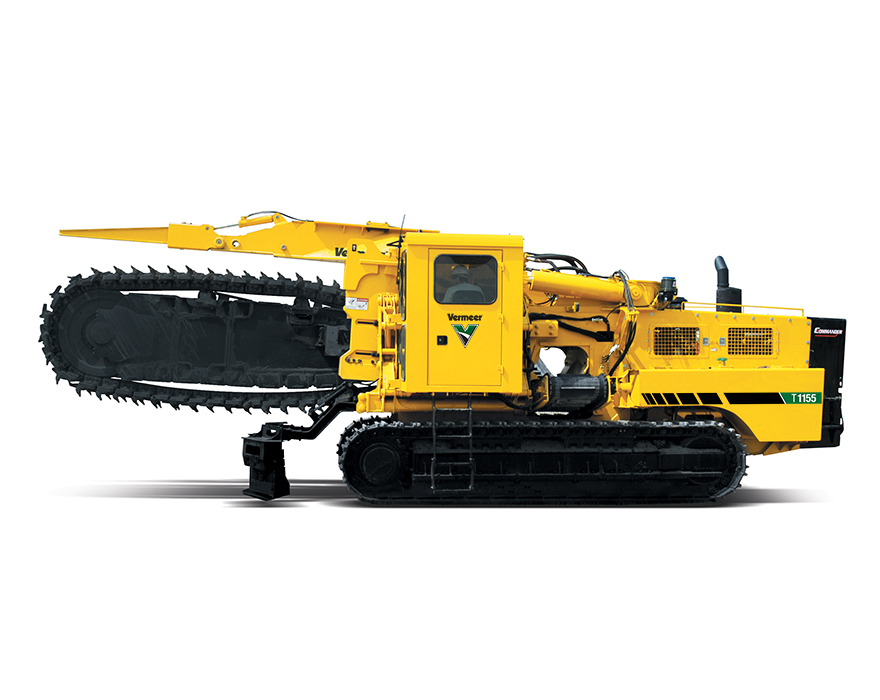
T1055 Commander 3 trencher: Designed for pipeline and utility installation projects requiring deep digging depths and high horsepower.
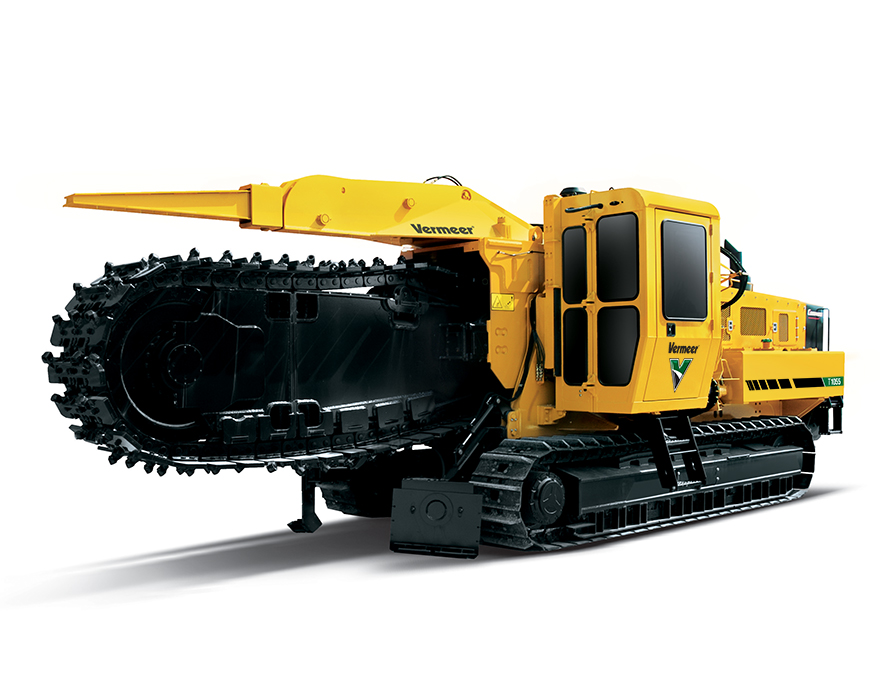
T955 Commander 3 trencher: Extra-wide dirt conveyor opening for high-volume spoil removal in tough trench-digging conditions.
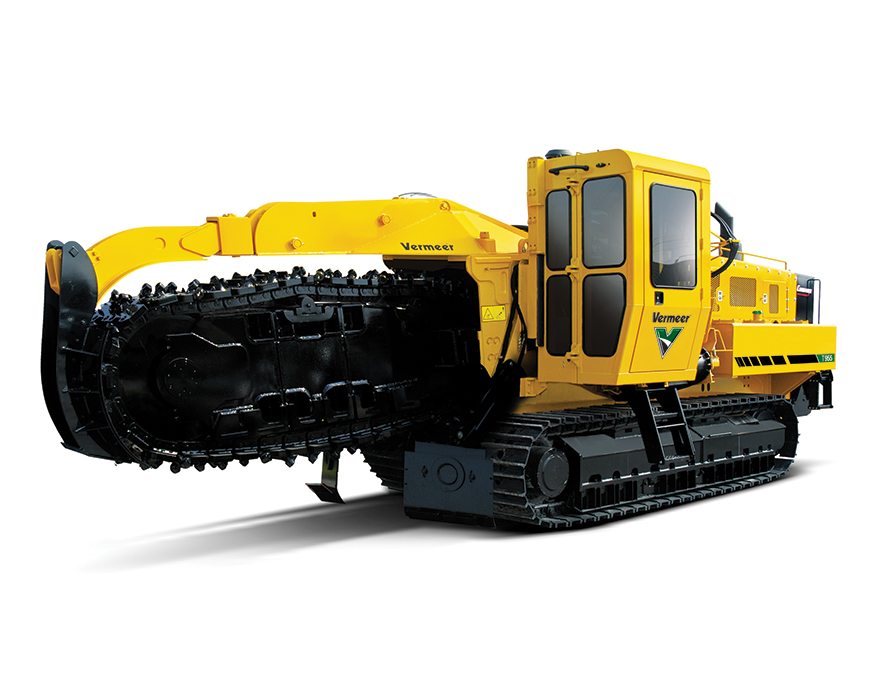
T755 Commander 3 trencher: Stands firm in tough trenching conditions with up to 60,000 lb (27,000 kg) of tractive force on the ground.
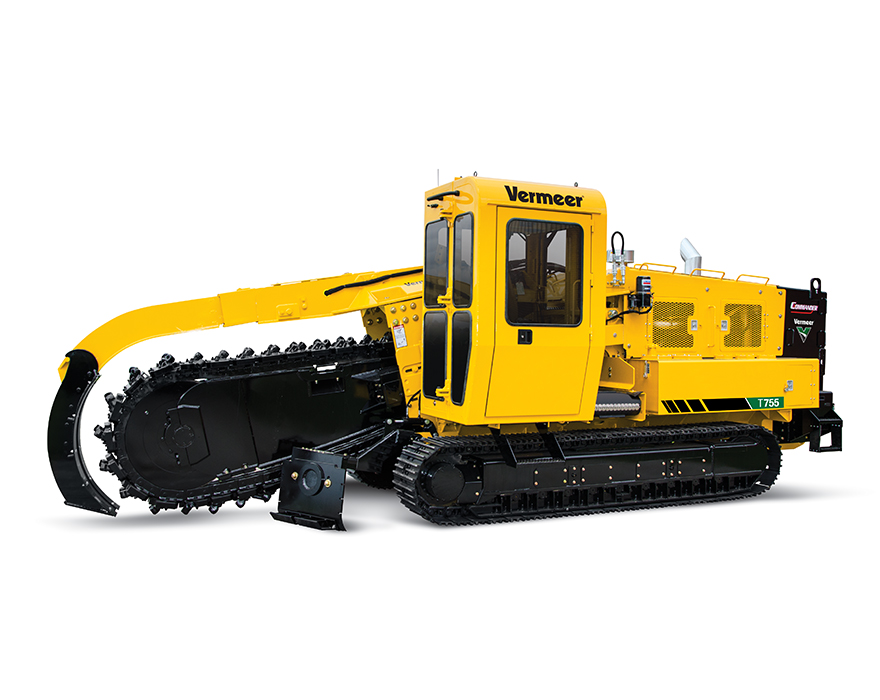
T655 Commander 3 trencher: Optional attachments for small-diameter cross-country pipelines and rock applications.
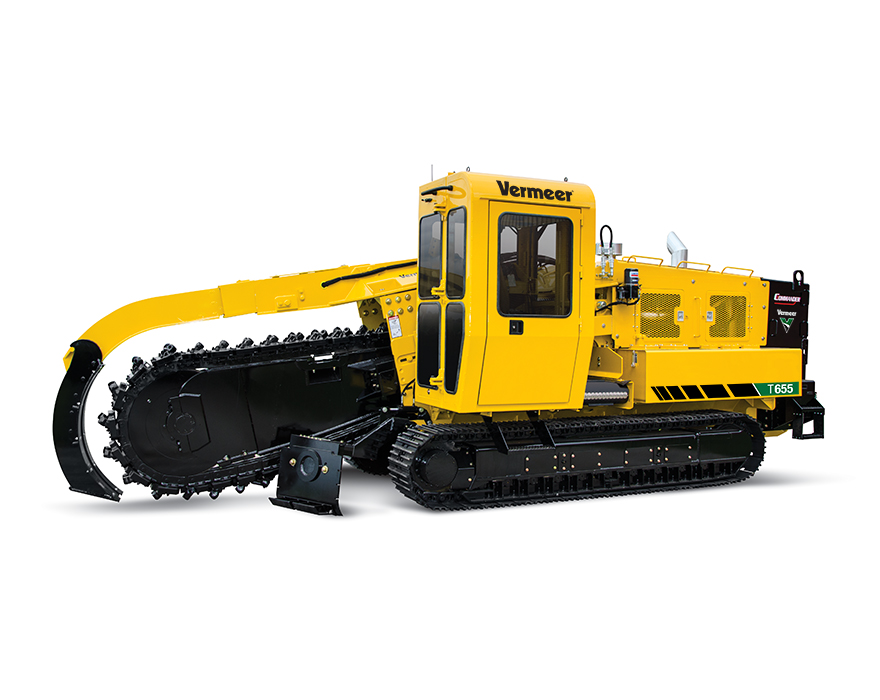
T555 Commander 3 trencher: Available with a variety of trencher boom lengths and an optional hydrostatic rockwheel attachment.
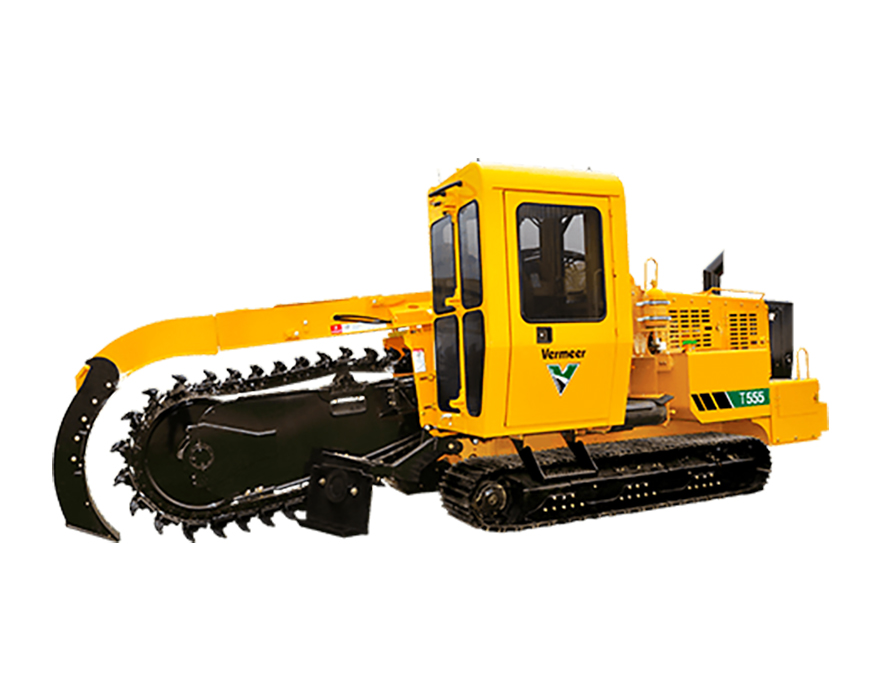
Maximizing trenching performance
To optimize trenching performance, contractors may need to customize trenchers for specific job requirements. Boom length adjustment is commonly done when cutting through solid rock formations. Shortening the boom allows the weight of the tractor to be closer to the cutting teeth, optimizing stability and cutting effectiveness. Adjusting the width of the trencher is achieved by changing the base plates, similar to changing chainsaw chains. Vermeer dealerships are skilled in these customization processes and can assist contractors in finding the right setup for their projects.
In addition, the chain speed of a trencher plays a crucial role in performance. Vermeer trencher models are fully hydrostatic, giving operators control over the chain speed from zero to 100%. Setting the chain speed at around 75% and the engine load control at 75% to 80% is often the sweet spot for optimal performance. However, when cutting rock, a slower speed is required. Operators should resist the temptation to speed up the chain, as it can lead to inefficient cutting and result in premature wear.
Consult an expert
Selecting the appropriate trencher size for utility projects involve considering various factors such as soil conditions, digging depth and width, and rock characteristics. With numerous trencher sizes and models available, choosing the right one can be a daunting task for contractors. Consulting with a Vermeer dealer can help contractors make an informed decision that maximizes productivity. Give them a call or stop by to get started.
Vermeer Corporation reserves the right to make changes in engineering, design and specifications; add improvements; or discontinue manufacturing at any time without notice or obligation. Equipment shown is for illustrative purposes only and may display optional accessories or components specific to their global region. Please contact your local Vermeer dealer for more information on machine specifications.
Vermeer, the Vermeer logo, Commander and TEC are trademarks of Vermeer Manufacturing Company in the U.S. and/or other countries. © 2023 Vermeer Corporation. All Rights Reserved.
